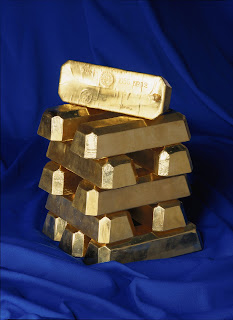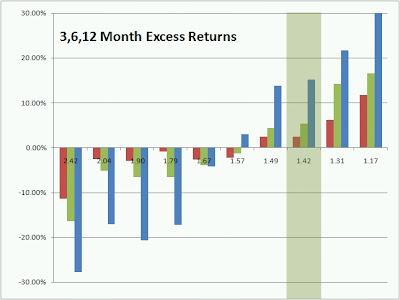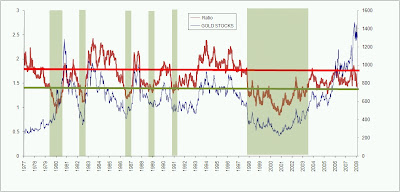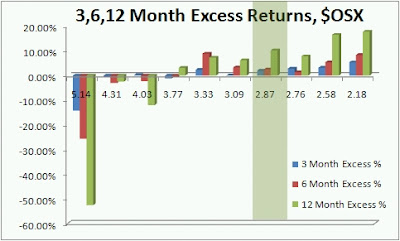
Can something as simple as tracking a commodity give predictive insight into what commodity stocks are going to do? Below I outline an example of the possibilities behind this type of analysis.
This line of analysis was originally developed by Jay Kaeppel and published in Stocks and Commodities magazine in July 1993 (Prospecting with Gold Mutual Funds). Kaeppel also authored a few books on options and futures like The Four Biggest Mistakes in Option Trading.
His work was examined and furthered by Nelson Freeburg of Formula Research who wrote a follow up article here. Kaeppel takes a simple ratio of a commodity stock index (in this case Barron’s Gold Mining Index) to the underlying cash commodity (gold). I used to track this every week for a whole host of commodities (oil, silver, etc). More than anything it can help give perspective to how expensive or cheap a basket of stocks is relative to what a commodity is doing – kind of a “forest from the trees” analysis. (Hussman talks about a similar method here and here.)
Here is the example with gold. Weekly data since 1977. I recorded all ratio readings, and then the subsequent 3, 6, and 12 month performance of the gold stock index. I then divided the historical data into deciles. The average returns for gold stocks since 1977 were 2.2%, 3.93%, and 9.93% (3,6,12 months).
Is there any sort of relationship between the ratio and future stock index movements? Below are charts for the 3,6, and 12 month excess returns (nets out the average return for gold stocks over the time period). There is a nice stair step that you want to see with this type of analysis. The highest ratios (stocks expensive relative to the commodity) result in future underperformance, and vice versa. Oil stocks as measured by the OSX are also in favorable territory. Kaeppel suggested buying gold stocks when the ratio was below 1.4, and selling when above 1.9.
Kaeppel’s simple system tests with 16% CAGR from 1977-1994 with drawdowns of -37% vs. 6% for the GMI and -73% drawdowns. Out of sample from 1994-2007 results in 9% CAGR with 54% DD vs. 2.5% CAGR and -75% DD for buy and hold. Both tests exclude the benefits of sitting in cash which would bump the results up probably 3% p.a. for the timing model.
Where is the ratio right now? Near the historical bottom 30% of readings, a pretty good time to be in gold stocks. Future total returns (not excess) in this decile were 8.39%, 18.13%, and 31.64% (3,6,12 months out). Below is a historical chart of gold stocks vs. the ratio. I tried to highlight when the ratio was below the bottom 30% of readings in green. Look at that big block of time from 1998-2003 when it was a great time to get long gold stocks. . .but who was talking about gold in 1998?
And here is the oil/OSX chart since 1997. . .




